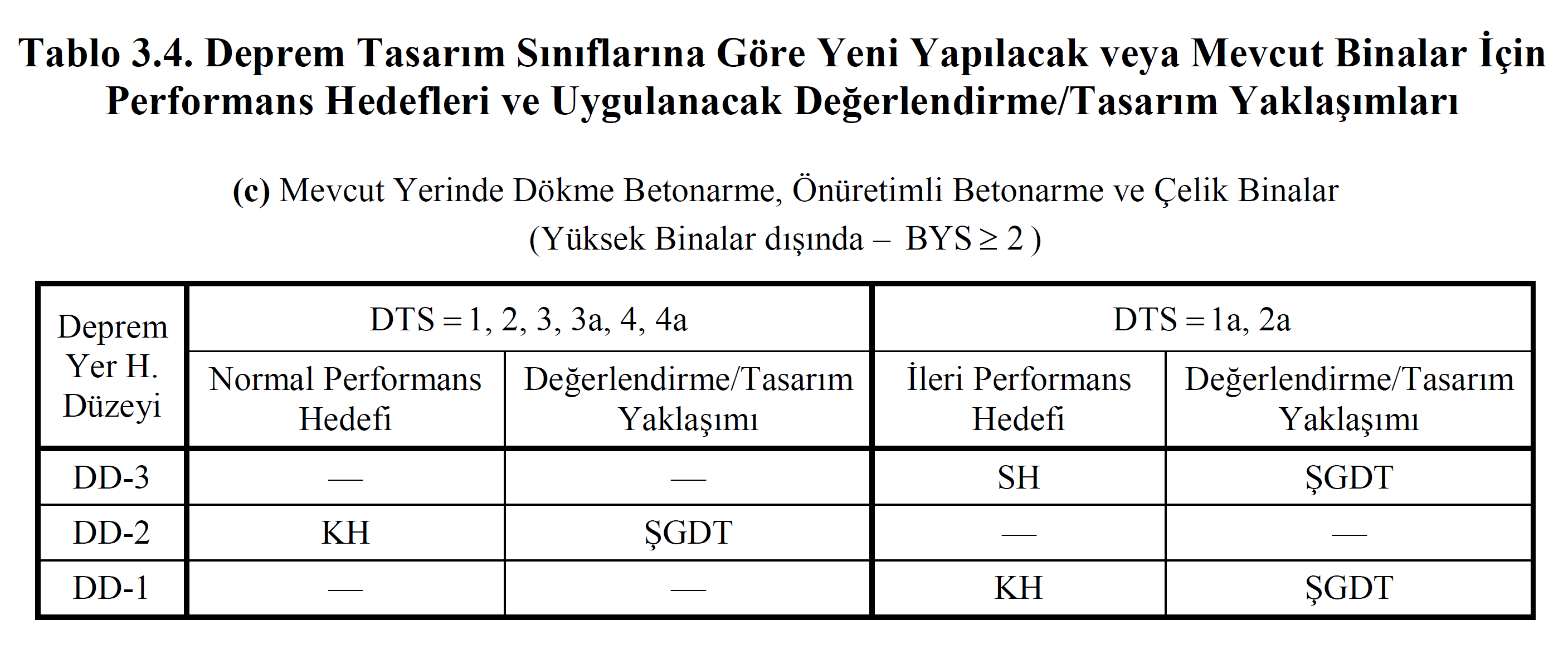15.8.1
The level of earthquake ground motion to be taken as a basis in determining the earthquake performance of existing buildings is selected by the user.
The performance of the existing structure is automatically determined for the selected earthquake ground motion level and calculation method.
ICONS
BYS = Building altitude class
DTS = Earthquake design class
DD-1 = Earthquake ground motion level
DD-2 with a probability of exceeding 2% (recurrence period 2475 years) in 50 years = earthquake ground with a probability of exceeding 10% in 50 years (recurrence period 475 years) motion level
DD-3 = earthquake ground motion level with 50% probability of exceedance in 50 years (recurrence period 72 years)
DD-4 = earthquake ground motion level with probability of exceeding in 50 years 68% (recurrence period 43 years)
Performance targets to be taken as basis in Assessment and Retrofitting of Existing Buildings within the scope of Assessment and Design Based on Shape Change (SSC) are defined in Table 3.4 (c) of TDBY .

According to the table above, in existing buildings with earthquake design class DTS = 1, 2, 3, 3a, 4, 4a, the Controlled Damage (KH) performance target should be achieved with the UDDT approach according to the DD-2 earthquake ground motion level. In existing buildings with earthquake design class DTS = 1a, 2a, the Controlled Damage (KH) performance target with DD-1 earthquake ground motion level should be achieved with the SHGDT approach and the Limited Damage (SE) performance target should be achieved with the SSDT approach according to the DD-3 earthquake ground motion level.
Next Topic
